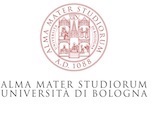DAVIDE DOMENICI
|
 |
|
The course will focus on the history of indigeneity as a cultural and political category. Following the European discovery of the New World, terms such as “Indian” were used as catch-all categories that, beside obscuring the cultural differences among the native peoples of the Americas, mostly defined their economical and political subalternity. Nonetheless, indianness soon became an identity marker that, at least in some instances and especially during the 16th and 17th centuries, was adopted and even reinforced by native elites involved in the negotiation of their political and economical role within the colonial society. New, panindian identities were also shaped by the participation of different native groups in anti-colonial rebellions. Decades later, when demographical catastrophes and economical subjugation had increased natives’ marginalization in colonial American societies, indianness was paradoxically assumed as a key element in the formation of the Latin American national identities, as well as of a new “panamerican” dream, by those creoles (that is, whites) who fostered the independence of their countries from the European colonial powers. Indian past thus became a powerful rhetorical device that stood at the base of the national history and political identity of the new Latin American “imagined communities”. If during most of the 20th century indigeneity was perceived as a marker of cultural backwardness to be overcome by its dilution within the modern and progressive mestizo societies, toward the end of the century the same category was radically transformed in a powerful strategic tool in the hands of native groups whose activities came to the fore of international politics. In precarious equilibrium between ahistorical essentialism, ecological naïveté, and indigenous empowerment, the “performance of indigenous heritage” is one of the key categories of 21st century global politics. |



